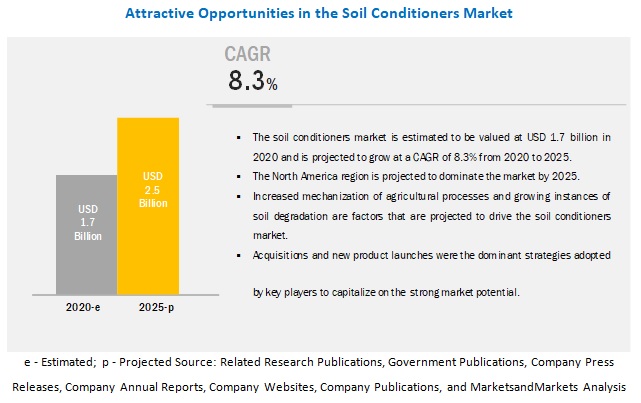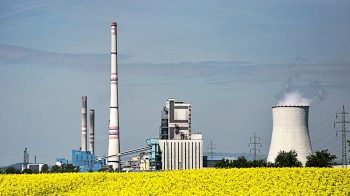
The soil conditioners market is projected to grow at a CAGR of 8.3% from 2020, to reach a value of USD 2.5 billion by 2025. The global market for soil conditioners is projected to witness significant growth due to factors such as rise in demand for agriculture crops, especially from developing countries, decrease in availability of arable land due to industrialization in both developed and developing countries, and shrinkage in productivity of soil due to use of fertilizers and chemicals.

Download PDF Brochure: https://www.marketsandmarkets.com/pdfdownloadNew.asp?id=171774013
By application, the agriculture segment is projected to be the fastest-growing segment in the soil conditioners market during the forecast period.
The surplus use of chemicals and fertilizers has led to shrinkage in the fertility and productivity of soil. Soil conditioners act as a valuable tool for the agricultural industry with their ability to enhance soil fertility, texture, and quality. Apart from this, shrinkage in the availability of arable land has urged farmers to enhance crop production in existing land, thus creating an opportunity for soil conditioner manufacturers. In developing countries, population growth and urbanization are the key reasons for the shrinkage of arable land. However, this has also increased the demand for crop production in these developing countries, thereby increasing the demand for soil conditioners in these countries.
By formulation, the liquid segment is projected to grow at the highest CAGR in the soil conditioners market during the forecast period.
The liquid forms are applied on a volume basis rather than a weight basis. The liquid form provides various options for crop growers to mix soil conditioners with insecticides, fungicides, or adjuvants. Compared to the dry form, little quantity of liquid soil conditioners is enough to cover larger crop areas, making it a preferable choice among farmers. In South America, the demand for liquid soil conditioners is expected to increase in the years to come, as they are easy to apply, do not require much labor, and increase yield.
The increasing demand for liquid soil conditioners in the South American region is projected to drive the growth of the soil conditioners market.
South American countries have agricultural hubs, such as Brazil, Argentina, and Chile, which contribute to the major farm outputs in the region. Brazil is the largest producer of soybean in the region as well at a global level. It is also the largest producer of other crops such as sugarcane and other key crops at a global level. The farmers in the region have largely adopted the use of liquid soil conditioners and wetting agents, as they are easy to apply, do not require much labor, and increase the yield. The availability of arable land and the expansion of farmlands, especially in Brazil, Argentina, and Chile, promise the growth of this market. Moreover, the need to improve the per hectare crop yield is another opportunity for the growth of the market in South America.
Request Sample Pages: https://www.marketsandmarkets.com/requestsampleNew.asp?id=171774013
Key Market Players:
Key players in this market include BASF (Germany), Syngenta (Switzerland), Novozymes (Denmark), Solvay (Belgium), UPL (India), Clariant (Switzerland), Evonik Industries (Germany), Eastman Chemical Company (US), Croda International PLC (UK), ADEKA Corporation (Japan), Vantage Specialty Chemicals (US), Aquatrols (US), Rallis India Limited (India), Humintech GmbH (Germany), GreenBest Ltd (UK), Omnia Specialities Australia (Australia), Grow More, Inc. (US), Geoponics Corp. (US), Delbon (France), and FoxFarm Soil & Fertilizer Co. (US). These major players in this market are focusing on increasing their presence through new product launches and acquisitions. These companies have a strong presence in North America, Asia Pacific, South America, and Europe. They also have manufacturing facilities and strong distribution networks across these regions.
